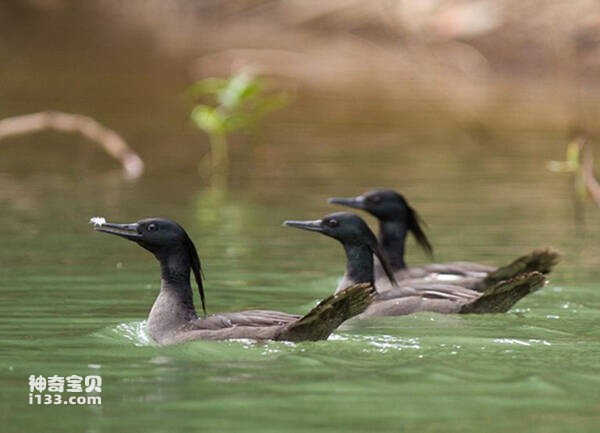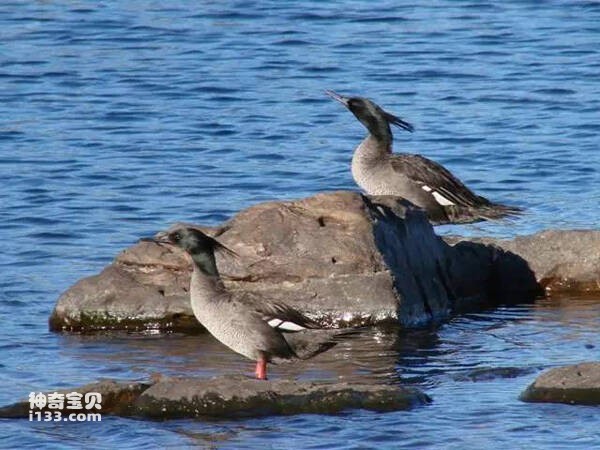Mergus octosetaceus
IUCN
LCBasic Information
Scientific classification
- name:Mergus octosetaceus
- Scientific Name:Mergus octosetaceus,Brazilian Merganser
- Outline:Waterfowl
- Family:
Vital signs
- length:49-56CM
- Weight:No textual research information is available
- lifetime:No textual research information is available
Feature
It is one of the six most threatened waterfowl in the world, with the total number of wild and artificial species estimated to be less than 250.
Distribution and Habitat
It is found in Argentina, Brazil and Paraguay.
It inhabits shallow streams with dense tropical forests, fast-flowing rivers and surrounding clear waters.
Appearance
The brown merganser is 49-56 cm long. It is a dark-feathered merganser with a long slender crown dark green with luster, and the female usually has a shorter crown. The upper body is dark gray, the chest is light gray, and the belly is white, especially the white wing mirror on the wings is very obvious when flying. There is a slender serrated red foot, a duck's beak and black legs. Female ducks have shorter bills and smaller crests. The brown merganser is relatively slender, and the male and female are the same color. Young ducks are distinguished from adults by their predominantly black and white throats and breasts.
Details
The Brown Merganser (Mergus octosetaceus) is Brazilian Merganser, without subspecies.

Mergansers often live in small flocks. Solitary activity is occasionally seen during migration and in winter. When swimming, the neck is very straight, sometimes the head is submerged in the water, and frequently diving. Rest more wandering on the shore or perched on the beach by the water. The flight is fast and straight, the two wings move quickly, and the sound of wings is often clear. It takes off awkwardly, requiring a sharp flap of the wings and a run across the water to get up. Diving is also very good, can dive in the water for 25-35 seconds at a time. Can also walk on the ground, rest often floating on the water. Head held high. The neck is very straight. Sometimes he went to rest on the shore. Walking on land is fine. When diving, like other merganser ducks, they first jump up, then roll over and dive into the water. Fly fast and straight. When taking off, the two wings need to beat quickly on the water to fly up, which is somewhat laborious and awkward. Sex timid and alert.
Mergansers feed mainly by diving, but sometimes by diving their heads directly into the water at the edge of the water. Foraging is mostly in small groups, swimming while diving for food, sometimes dispersed into 2-3 or single foraging. The diet is mainly small fish, but also aquatic insects, insect larvae, crustaceans, mollusks and other aquatic animals. And occasionally eat small amounts of plant foods.

Listed on the International Union for Conservation of Nature (IUCN) 2012 Red List of Threatened Species ver3.1 - Critically Endangered (CR).
Protect wild animals and eliminate wild meat.
Maintaining ecological balance is everyone's responsibility!








